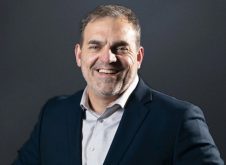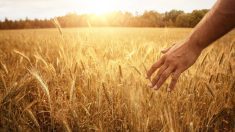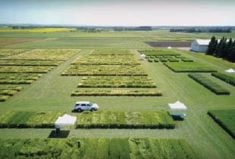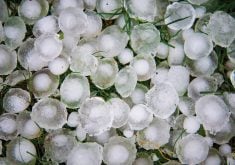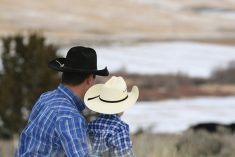It takes guts to be a farmer these days.
“Farming is an extremely complex business to run, and it takes remarkable courage,” said author Rebecca Thistlethwaite, who farms in Oregon.
“It demands an incredible well of passion, a willingness to learn, and ‘stick-to-it-tiveness’ to make it work.”
But more and more, farmers are finding that they can’t stick to it anymore.
“Agriculture appears to be a dying art,” Thistlethwaite said at the Organic Alberta conference in late February.
“Every year, there are fewer farmers, with vast consolidation of the largest ones, and an increasingly aging farming population. One-half of U.S. farmland is set to change hands in the next 20 years, and much of that is going to investment firms and not family farms.”
Read Also

Grazing ‘sweet spot’ boosts pasture performance
Timing-focused approach to pasture management touted to boost forage growth, livestock gains while also cutting farmer labour and inputs
And the rising cost of farmland is making it increasingly difficult for new farmers to enter the industry, she said.
“Canadian farmland values are appreciating by the double digits. That’s great if you’re trying to sell your land, and not so great if you’re looking to buy and get into agriculture.”
In Canada, 76 per cent of family farm income comes from off-farm jobs — “a recipe for burnout,” said Thistlethwaite.
“Not only do you work your tails off growing food for people, but you also have to work other jobs to make ends meet,” she said. “After you put in your 60 hours of farming, now go work another 40 hours — plus take care of your families, your health, your homes. It’s not realistic and it’s not fair.”
Thistlethwaite experienced that first hand while farming with her husband in northern California, where the couple built one of the largest organic pasture and livestock operations in the West, grossing nearly half a million dollars a year.
But the workload to build that business was “entirely unsustainable.”
“We would have stuck it out had there been a proverbial light at the end of the tunnel, which for us was our goal of eventually owning land,” she said.
“But with farmland prices in excess of $50,000 an acre in northern California, there was no possible way for the farm income to cash flow a mortgage such as that.”
So the couple decided to sell the farm.
“A huge weight was lifted from our shoulders when we decided to sell the business and take a break to reflect on what we had learned and what we wanted to try next.”
A holistic vision
Today, Thistlethwaite and her husband run a small farm in Oregon, where they raise livestock in a scaled-down version of their old operation.
And that shift started when they created a holistic vision for their farm and their life.
“Going through that process really helped us decide which enterprises to cut, which ones to focus on, and where we wanted to put our focus and our passions,” she said.
A holistic vision looks at the goals you have for your operation and the resources needed to make them a reality, said Thistlethwaite.
The first step of creating a holistic vision is setting “quality-of-life goals for your whole family.”
“What are the things you guys care about the most? For us, it was having a strong social network, quality time for our children, maybe a couple weeks of vacation a year, and the financial ability to retire at some point,” she said, adding it’s important to include the whole family in setting those goals.
“You’re going to have different quality-of-life goals, and that’s fine. Just come up with that by brainstorming a list of the things that are most important to you.”
Next, you need to decide “what your forms of production are.”
“These are the various ways you’ll make these quality-of-life goals a reality,” said Thistlethwaite.
“For us, it was having a profitable farm enterprise, having work weeks that were no more than 50 hours a week, having trained employees so we could take a couple weeks of vacation a year, and membership in various groups and church to enrich our social networks.”
The final component is the resources you need to make the goals and forms of production attainable.
“Those are things like healthy soils, plentiful water, balanced wildlife populations, a community that supports agriculture, et cetera,” she said.
Once you have these three pieces in place — preferably on paper — you can use them to create a vision statement for your family and your business, she said.
“This vision will serve as a touchstone for guiding your path, making solid decisions, and giving you inspiration when times get tough,” said Thistlethwaite.
Every farm family will need to decide on their own definition of success — and it’s OK if that doesn’t mean having the biggest land base or most cattle, she said. But “sheer hard work” alone won’t make you successful.
“It is possible to be a successful and sustainable farmer, but you have to get all the puzzle pieces right,” said Thistlethwaite.
“It’s not just hard work, nor is it luck. It’s a little bit of both.”



